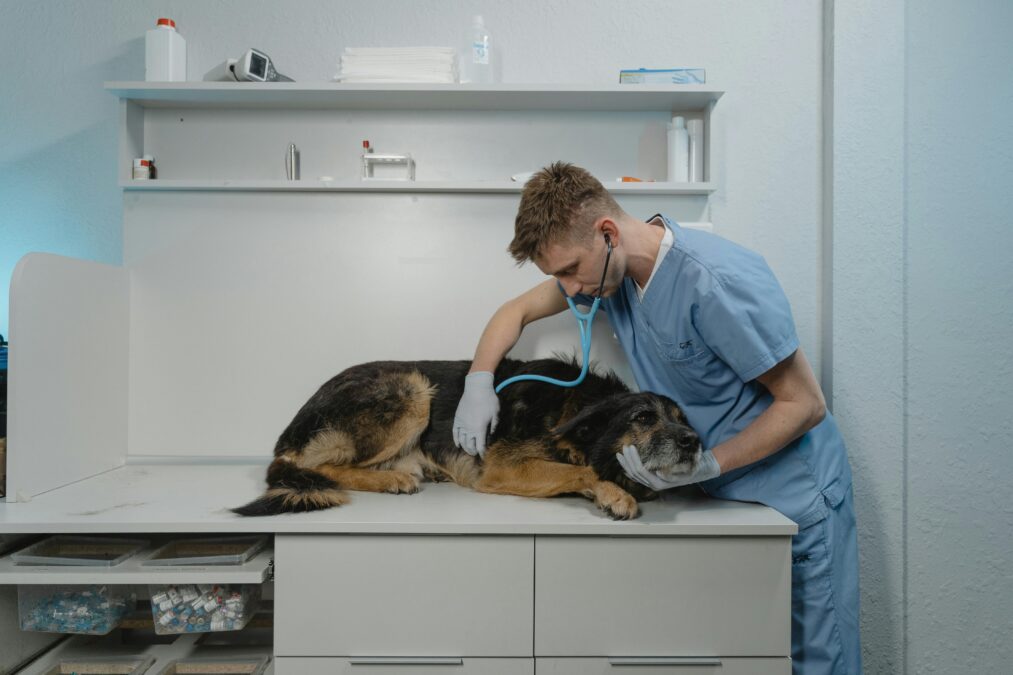Bloody Diarrhea in Dogs: Causes, Symptoms, and Treatment
As dog owners, our furry companions’ health is one of our top priorities. So, what do you do when your dog starts showing signs of bloody diarrhea? It can be an alarming and distressing situation, but don’t panic just yet. This guide will help you understand the causes, symptoms, treatments, and ways to prevent bloody diarrhea in dogs.
Let’s dive deep into what bloody diarrhea really means for your dog and what you can do to help them recover quickly.
What is Bloody Diarrhea in Dogs?
Bloody diarrhea in dogs is a condition where blood is present in the dog’s stool. This blood may be fresh (red) or digested (black and tarry), and it can indicate a wide range of health issues, some of which can be serious.
While some cases resolve with time and basic care, others can point to more significant health problems that need immediate attention.
Causes of Bloody Diarrhea in Dogs

Several factors can lead to bloody diarrhea in dogs, ranging from mild to severe. Here’s a breakdown of the common causes:
a) Intestinal Parasites Parasites like hookworms or whipworms can cause intestinal irritation, leading to inflammation and bloody stools. Puppies are especially vulnerable to parasite-related bloody diarrhea.
b) Bacterial Infections Bacteria such as Salmonella or Campylobacter can lead to gastrointestinal upset and bloody diarrhea. Dogs can contract these infections through contaminated food or water.
c) Inflammatory Bowel Disease (IBD) IBD in dogs is a chronic condition where inflammation in the digestive tract leads to symptoms such as diarrhea with blood. It requires long-term management, often through medication and dietary adjustments.
d) Dietary Indiscretion Dogs love to explore the world with their mouths, which can lead to them consuming something they shouldn’t. Eating spoiled food or garbage, or ingesting toxins, can irritate the digestive system and cause bloody diarrhea.
e) Foreign Object Ingestion If a dog swallows a foreign object like a toy or piece of fabric, it can cause blockages or tears in the intestines, leading to blood in the stool.
f) Stress or Anxiety Stress can do more than affect a dog’s mood; it can upset their digestive system too. Dogs who experience anxiety due to changes in their environment, loud noises, or separation from their owner may develop bloody diarrhea.
Types of Bloody Diarrhea
Bloody diarrhea can appear in two primary forms, each with its own implications.
a) Hematochezia (Fresh Blood) This type involves the presence of bright red blood in the stool, indicating bleeding from the lower digestive tract, typically from the colon or rectum.
b) Melena (Dark, Tarry Stools) Melena is characterized by dark, tarry stools that occur due to digested blood from the upper digestive tract, such as the stomach or small intestines. This type of bleeding often points to more serious conditions.
Symptoms Accompanying Bloody Diarrhea
Bloody diarrhea rarely occurs in isolation. There are usually other symptoms that accompany it, such as:
a) Lethargy If your dog is unusually tired or inactive, it may be a sign that their body is dealing with an underlying illness.
b) Vomiting Vomiting along with bloody diarrhea is a concerning sign and could indicate a more severe gastrointestinal issue.
c) Dehydration Dogs with diarrhea lose fluids rapidly, and bloody diarrhea can exacerbate dehydration, making it vital to provide plenty of water.
d) Abdominal Pain Your dog may whimper, cry, or refuse to let you touch their stomach if they’re experiencing abdominal pain along with diarrhea.
When to Contact a Veterinarian
If your dog has bloody diarrhea, it’s essential to monitor their overall condition. Contact your veterinarian immediately if you notice:
- Persistent bloody diarrhea for more than 24 hours
- Signs of severe dehydration (such as excessive panting or sunken eyes)
- Vomiting, lethargy, or abdominal pain alongside the bloody diarrhea
- Your dog stops eating or drinking
Early intervention can prevent more serious issues from developing.
Diagnosis of Bloody Diarrhea

Veterinarians use several diagnostic tools to determine the underlying cause of bloody diarrhea in dogs. Some of these may include:
a) Physical Examination The vet will start by conducting a thorough physical exam to assess your dog’s overall condition.
b) Fecal Analysis A fecal sample will be examined to check for parasites, bacteria, or signs of infection.
c) Blood Tests Blood tests help evaluate your dog’s overall health and look for signs of infection, anemia, or other abnormalities.
d) Imaging (X-rays, Ultrasound) If the vet suspects a blockage or more severe internal issue, imaging techniques like X-rays or ultrasounds may be used to identify problems in the digestive system.
Treatment Options for Bloody Diarrhea in Dogs

Treatment for bloody diarrhea depends on the underlying cause. Your vet may recommend the following:
a) Fluid Therapy Dogs with diarrhea often need fluid therapy to prevent dehydration. This may involve intravenous (IV) fluids or subcutaneous fluid administration.
b) Dietary Changes A bland diet can help soothe the digestive system. Your vet might suggest feeding your dog foods like boiled chicken and rice until their condition improves.
c) Medications Depending on the cause, antibiotics, anti-inflammatory drugs, or other medications might be prescribed to treat infections, inflammation, or parasites.
d) Surgery (in severe cases) If a foreign object is causing a blockage or there is a severe tear in the intestines, surgery may be required to correct the problem.
Home Care for Dogs with Bloody Diarrhea
While vet care is crucial, there are also steps you can take at home to support your dog’s recovery. Ensure they get plenty of rest, offer small amounts of water frequently to avoid dehydration, and follow your vet’s dietary and medication instructions to the letter.
Prevention of Bloody Diarrhea
Preventing bloody diarrhea is possible by taking a few key precautions:
a) Regular Vet Checkups Routine vet visits can help catch potential health issues before they escalate into serious problems.
b) Parasite Prevention Using preventive treatments for parasites, such as deworming tablets or flea treatments, can reduce the risk of parasite-related bloody diarrhea.
c) Diet Management Avoid giving your dog access to human food, garbage, or other harmful substances. Stick to a vet-approved diet to keep their digestive system healthy.
Can Stress Cause Bloody Diarrhea?
Yes, stress can cause bloody diarrhea in some dogs. Emotional distress can upset the balance in their digestive system, leading to diarrhea or even blood in their stool.
Conclusion
Bloody diarrhea in dogs is concerning but manageable if you act quickly. Understanding the causes, symptoms, and treatments can make all the difference in getting your dog back to their normal, playful self. Always consult with a veterinarian to ensure your furry friend



















